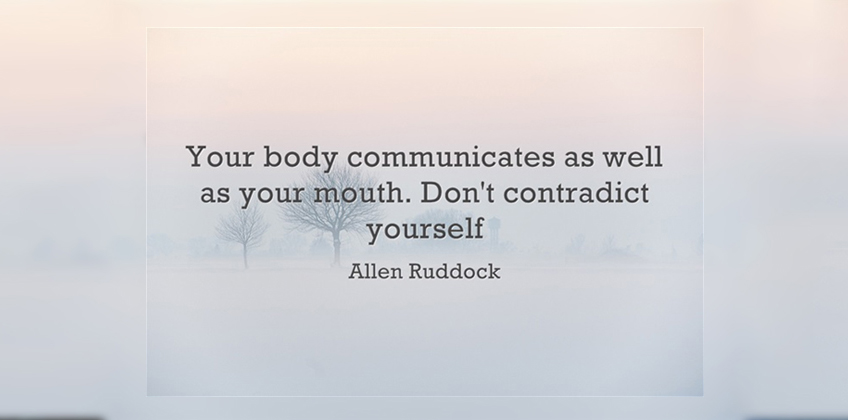This quote really caught my attention. Interpersonal communication is much more than the explicit meaning of words, or message conveyed. It also includes implicit messages, whether intentional or not, which are expressed through non-verbal behaviours.
Communication is a vital life skill and developing it can benefit all aspects of life. More than just the words that are used, effective communication is a combination of the way you look, listen, move, and react to another person tells them more about how you’re feeling than words alone can.
Nonverbal communication, or body language, includes –
- Facial expressions
- Body movement and gestures
- Eye contact
- Posture
- Tone of your voice
Developing the ability to understand and use nonverbal communication can help you connect with others, express what you really mean, navigate challenging situations, and build better relationships at home and work.
 Here are 5 Tips to Improve how you Deliver Non-Verbal Communication and Read It
Here are 5 Tips to Improve how you Deliver Non-Verbal Communication and Read It
- Be aware of individual differences.People from different countries and cultures tend to use different nonverbal communication gestures, so it’s important to take age, culture, religion, gender, and emotional state into account when displaying or reading body language signals
- Look at nonverbal communication signals as a group.Don’t read too much into a single gesture or nonverbal cue. Consider all of the nonverbal signals you receive, from eye contact to tone of voice to body language. Remember people see the signals as a whole and read them in congruence so make sure your non-verbal communication is positive
- Use nonverbal signals that match up with your wordsrather than contradict them. If you say one thing, but your body language says something else, your listener will feel confused or suspect that you’re being dishonest
- Adjust your nonverbal signals according to the context. Take into account the role, maturity, age, experience, emotional state and cultural background of the person you’re interacting with. The tone of your voice, should be different when you’re addressing a new employee than when you’re addressing a group of tenured team members. Remember to dress as per the context and audience
- Avoid negative body language. Use body language to convey positive feelings even when you’re not actually experiencing them. If you’re nervous about a situation—a job interview or an important presentation, you can use positive body language to signal confidence, even though you’re not feeling it. Instead of tentatively entering a room with your head down, eyes averted, and sliding into a chair, try standing tall with your shoulders back, smiling and maintaining eye contact, and delivering a firm handshake.

We can reinforce, contradict, substitute, complement or emphasize our verbal communication with non-verbal cues such as gestures, expressions and vocal inflection, so make sure you are not contradicting your own self !!
At Tranziam our vision is to ignite the passion, inspire the dream and unleash the potential in every individual so that they can be the very best version of themselves. Whether you are an individual looking to improve yourself, an Educational Institution looking to support your Students and Faculty or an Organisation looking to develop your colleagues on their professional journey, we are here to help you every step of the way.
Click Here to find out more information on how we can help you achieve your goals and aspirations

